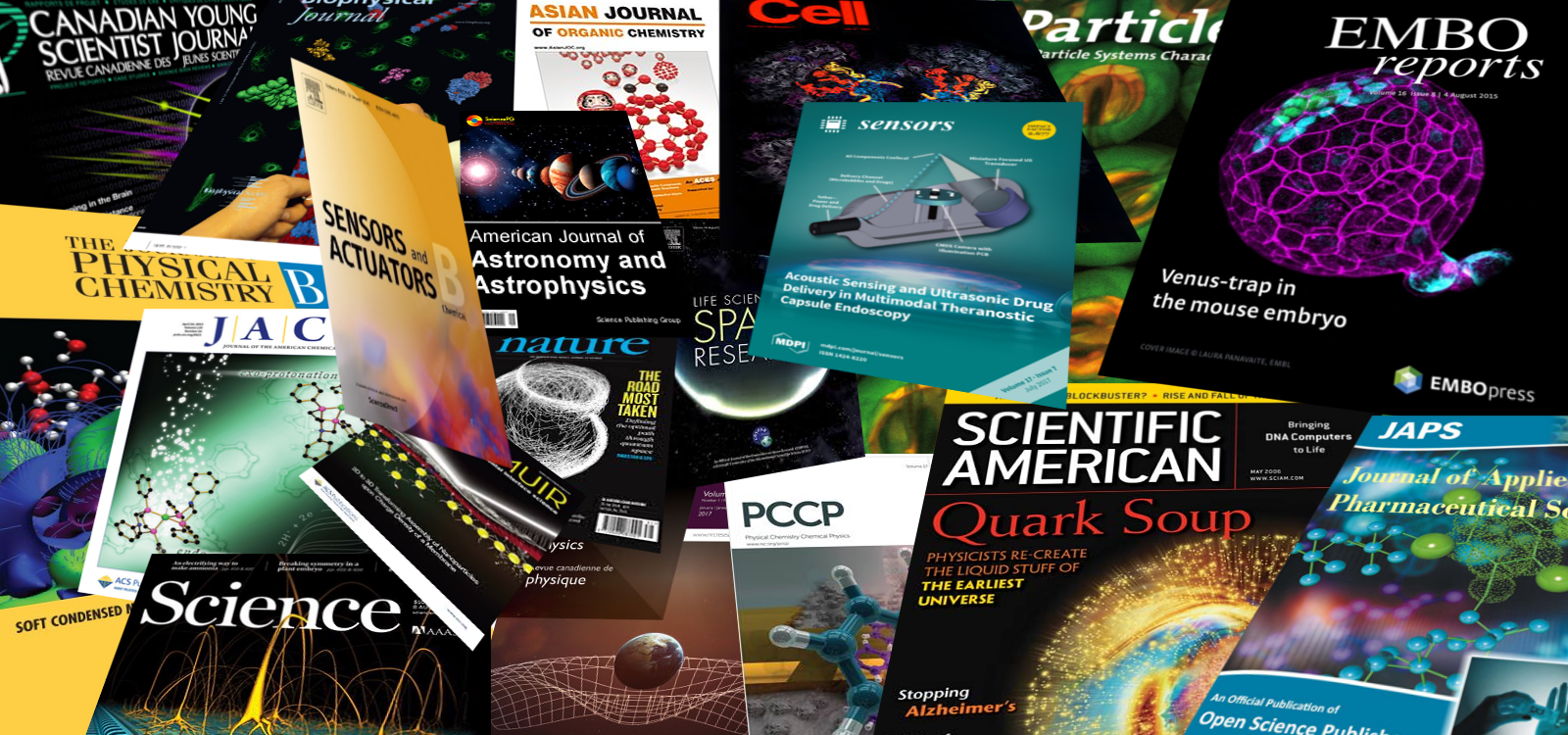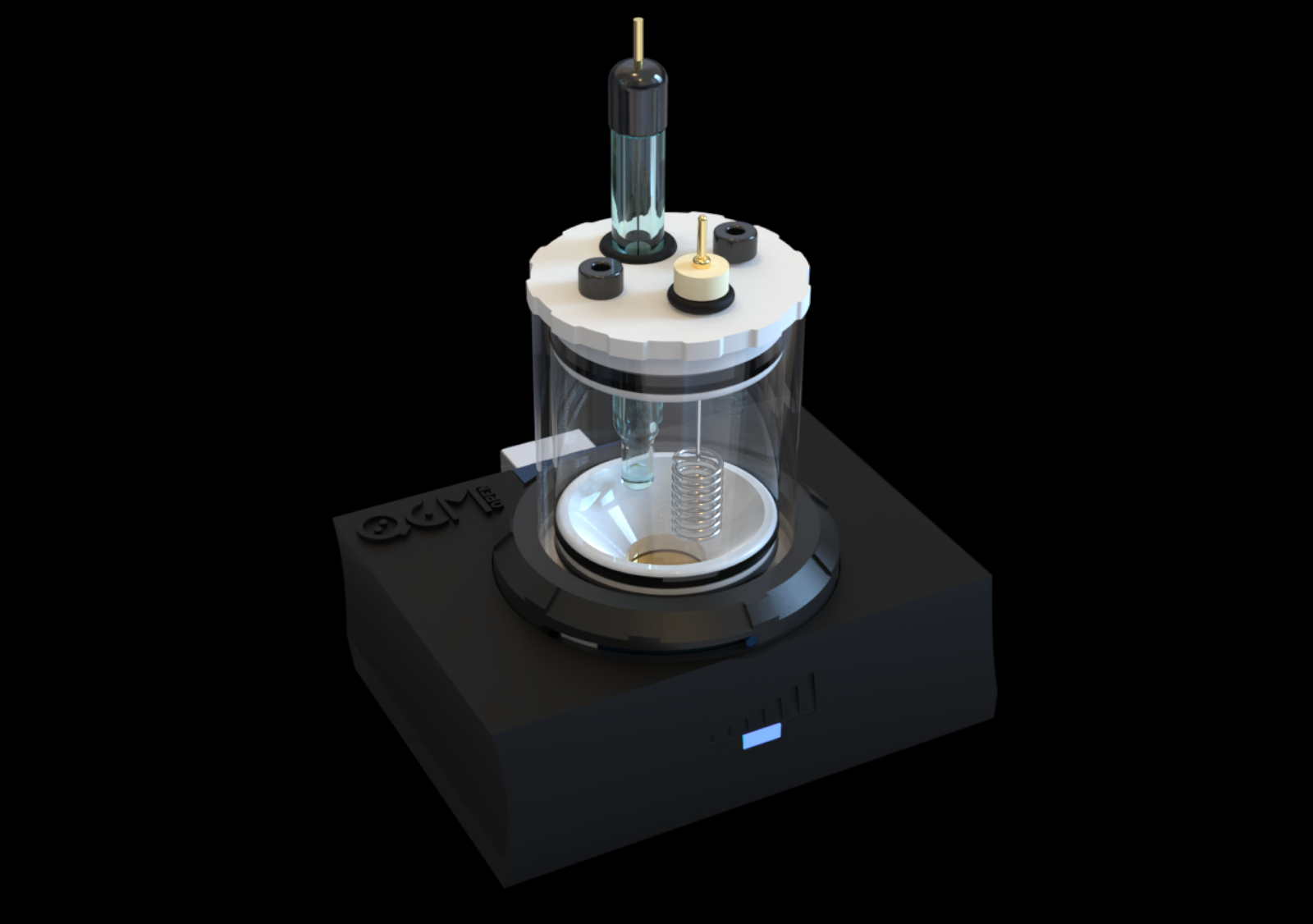openQCM – Powered by Novaetech S.r.l

Scientific Papers
Publications citing the applications of openQCM (by Novaetech S.r.l.) instruments and accessories in scientific research.
The list of scientific papers published on the most important journals showing the usage of openQCM in several scientific fields, such as thin film deposition, chemical sensors, biological research and biosensors.
Because of the large number of publications, we are reorganizing everything by subject areas. This will take some time. Thank you for your patience
2025
Reichert, Per; Malhotra, Jaskaran Singh; Krishnan, Deepthy; Evli, Sinem; Yamunan, Srihari; Duarte, Clara Dávila; Kubus, Mariusz; Sundberg, Jonas
Surface-Mounted Metal-Organic Framework for the Adsorption and Sensing of Monoaromatic Pollutants in Water Using Quartz Crystal Microbalance Journal Article
In: Advanced Materials Technologies, vol. n/a, no. n/a, pp. e01340, 2025.
Abstract | Links | BibTeX | Tags: Adsorption, metal-organic frameworks, openQCM NEXT, pollution, QCM-D, Quartz Crystal Microbalance (QCM), sensors
@article{https://doi.org/10.1002/admt.202501340,
title = {Surface-Mounted Metal-Organic Framework for the Adsorption and Sensing of Monoaromatic Pollutants in Water Using Quartz Crystal Microbalance},
author = {Per Reichert and Jaskaran Singh Malhotra and Deepthy Krishnan and Sinem Evli and Srihari Yamunan and Clara Dávila Duarte and Mariusz Kubus and Jonas Sundberg},
url = {https://advanced.onlinelibrary.wiley.com/doi/abs/10.1002/admt.202501340},
doi = {https://doi.org/10.1002/admt.202501340},
year = {2025},
date = {2025-08-26},
journal = {Advanced Materials Technologies},
volume = {n/a},
number = {n/a},
pages = {e01340},
abstract = {Abstract Environmental pollution from industrial and anthropogenic activities pose a threat to this access to clean water. Advanced chemical sensors that are simple-to-operate can offer high spatial and temporal resolution, increasing the understanding of the source, fate and distribution of pollutants. One class of highly water-soluble pollutants are benzene, toluene, ethylbenzene and xylene isomers (collectively referred to as BTEX). These compounds are prevalent specifically in fossil fuels and are therefore often found in areas surrounding processing and storage facilities. Selective sensing of chemicals in water is challenging due to the cross-reactivity toward water. Porous metal-organic frameworks have shown promise as analyte-receptors due to the possibility to tune their structure for selective adsorption. It is hypothesized that a hydrophobic MOF with pore dimensions similar to the BTEX molecules will selectively partition these analytes from water. In this study, it is have specifically investigated UHMOF-100, a material previously shown to be highly water-repellent with narrow pores hypothesized to selectively adsorb non-polar compounds. Bulk adsorption experiments confirmed the ability of UHMOF-100 to rapidly adsorb BTEX from water, demonstrating high mass capacities influenced by a complex interplay of water solubility, molecular size, and guest–host interactions. Building upon this, UHMOF-100 thin films on quartz crystal microbalance (QCM) resonators using a layer-by-layer technique is fabricated. The functionalized QCM sensors successfully detected individual BTEX species in water within a 0–50 mg L−1 range, with quantifiable responses as low as 5 mg L−1. The sensors showed low cross-sensitivity toward polar contaminants and demonstrated both chemical stability and mechanical robustness under continuous flow. This work presents, to the knowledge, the first example of a MOF-based QCM sensor for BTEX detection in water, demonstrating the potential of suitably designed porous materials for challenging aqueous sensing applications.},
keywords = {Adsorption, metal-organic frameworks, openQCM NEXT, pollution, QCM-D, Quartz Crystal Microbalance (QCM), sensors},
pubstate = {published},
tppubtype = {article}
}
Abstract Environmental pollution from industrial and anthropogenic activities pose a threat to this access to clean water. Advanced chemical sensors that are simple-to-operate can offer high spatial and temporal resolution, increasing the understanding of the source, fate and distribution of pollutants. One class of highly water-soluble pollutants are benzene, toluene, ethylbenzene and xylene isomers (collectively referred to as BTEX). These compounds are prevalent specifically in fossil fuels and are therefore often found in areas surrounding processing and storage facilities. Selective sensing of chemicals in water is challenging due to the cross-reactivity toward water. Porous metal-organic frameworks have shown promise as analyte-receptors due to the possibility to tune their structure for selective adsorption. It is hypothesized that a hydrophobic MOF with pore dimensions similar to the BTEX molecules will selectively partition these analytes from water. In this study, it is have specifically investigated UHMOF-100, a material previously shown to be highly water-repellent with narrow pores hypothesized to selectively adsorb non-polar compounds. Bulk adsorption experiments confirmed the ability of UHMOF-100 to rapidly adsorb BTEX from water, demonstrating high mass capacities influenced by a complex interplay of water solubility, molecular size, and guest–host interactions. Building upon this, UHMOF-100 thin films on quartz crystal microbalance (QCM) resonators using a layer-by-layer technique is fabricated. The functionalized QCM sensors successfully detected individual BTEX species in water within a 0–50 mg L−1 range, with quantifiable responses as low as 5 mg L−1. The sensors showed low cross-sensitivity toward polar contaminants and demonstrated both chemical stability and mechanical robustness under continuous flow. This work presents, to the knowledge, the first example of a MOF-based QCM sensor for BTEX detection in water, demonstrating the potential of suitably designed porous materials for challenging aqueous sensing applications.
2023
Milsom, Adam; Qi, Shaojun; Mishra, Ashmi; Berkemeier, Thomas; Zhang, Zhenyu; Pfrang, Christian
In: EGUsphere, vol. 23, iss. 19, pp. 10835–10843, 2023.
Abstract | Links | BibTeX | Tags: aerosol, Dissipation Monitoring, films, openQCM NEXT, Ozone, pollutants, pollution, QCM, QCM-D, Quartz Crystal Microbalance
@article{milsom2023situ,
title = {In-situ measurements and modelling of the oxidation kinetics in films of a cooking aerosol proxy using a Quartz Crystal Microbalance with Dissipation monitoring (QCM-D)},
author = {Adam Milsom and Shaojun Qi and Ashmi Mishra and Thomas Berkemeier and Zhenyu Zhang and Christian Pfrang},
url = {https://acp.copernicus.org/articles/23/10835/2023/},
doi = {https://doi.org/10.5194/acp-23-10835-2023},
year = {2023},
date = {2023-10-04},
urldate = {2023-10-04},
journal = {EGUsphere},
volume = {23},
issue = {19},
pages = {10835–10843},
publisher = {Copernicus Publications Göttingen, Germany},
abstract = {Aerosols and films are found in indoor and outdoor environments. How they interact with pollutants, such as ozone, has a direct impact on our environment via cloud droplet formation and the chemical persistence of toxic aerosol constituents. The chemical reactivity of aerosol emissions is typically measured spectroscopically or by techniques such as mass spectrometry, directly monitoring the amount of material during a chemical reaction. We present a study which indirectly measures oxidation kinetics in a common cooking aerosol proxy using a low-cost quartz crystal microbalance with dissipation monitoring (QCM-D). We validated this approach by comparison with kinetics measured both spectroscopically and with high-intensity synchrotron radiation. Using microscopy, we found that the film morphology changed and film rigidity increased during oxidation. There was evidence of surface crust formation on oxidised particles, though this was not consistent for all experiments. Crucially, our kinetic modelling of these experimental data confirmed that the oleic acid decay rate is in line with previous literature determinations, which demonstrates that performing such experiments on a QCM-D does not alter the underlying mechanism. There is clear potential to take this robust and low-cost but sensitive method to the field for in situ monitoring of reactions outdoors and indoors.},
keywords = {aerosol, Dissipation Monitoring, films, openQCM NEXT, Ozone, pollutants, pollution, QCM, QCM-D, Quartz Crystal Microbalance},
pubstate = {published},
tppubtype = {article}
}
Aerosols and films are found in indoor and outdoor environments. How they interact with pollutants, such as ozone, has a direct impact on our environment via cloud droplet formation and the chemical persistence of toxic aerosol constituents. The chemical reactivity of aerosol emissions is typically measured spectroscopically or by techniques such as mass spectrometry, directly monitoring the amount of material during a chemical reaction. We present a study which indirectly measures oxidation kinetics in a common cooking aerosol proxy using a low-cost quartz crystal microbalance with dissipation monitoring (QCM-D). We validated this approach by comparison with kinetics measured both spectroscopically and with high-intensity synchrotron radiation. Using microscopy, we found that the film morphology changed and film rigidity increased during oxidation. There was evidence of surface crust formation on oxidised particles, though this was not consistent for all experiments. Crucially, our kinetic modelling of these experimental data confirmed that the oleic acid decay rate is in line with previous literature determinations, which demonstrates that performing such experiments on a QCM-D does not alter the underlying mechanism. There is clear potential to take this robust and low-cost but sensitive method to the field for in situ monitoring of reactions outdoors and indoors.
Massera, Ettore; Barretta, Luigi; Miglietta, Maria Lucia; Alfano, Brigida; Polichetti, Tiziana
Quartz Crystal Microbalance Study in Controlled Environment for Particulate Matter Sensing Book Section
In: Sensors and Microsystems: Proceedings of AISEM 2022, pp. 129–134, Springer, 2023.
Abstract | Links | BibTeX | Tags: air quality, environment, graphene, pollution, QCM, Quartz Crystal Microbalance
@incollection{massera2023quartz,
title = {Quartz Crystal Microbalance Study in Controlled Environment for Particulate Matter Sensing},
author = {Ettore Massera and Luigi Barretta and Maria Lucia Miglietta and Brigida Alfano and Tiziana Polichetti},
url = {https://link.springer.com/chapter/10.1007/978-3-031-25706-3_21},
doi = {https://doi.org/10.1007/978-3-031-25706-3_21},
year = {2023},
date = {2023-02-02},
urldate = {2023-01-01},
booktitle = {Sensors and Microsystems: Proceedings of AISEM 2022},
pages = {129--134},
publisher = {Springer},
abstract = {Today, air quality sensors miniaturization is a trending topic for industry research. Market demand for wearable devices with “internet of things” capabilities has exponential growth. Particulate matter sensors in consumer electronics are all based on the optical particles counter mechanism and are always too bulky. As an interesting alternative we propose a study on a commercial quartz crystal microbalance showing the correlation between its electronic features and the measurement of the particulate matter present in the air with a reference instrument. We also present preliminary measurements for a quartz crystal microbalance which surface is covered by a layer of graphene nanoplatelets making a comparison with the pristine one.},
key = {QCM, Quartz Crystal Microbalance, Sensor, pollution, air quality, graphene},
keywords = {air quality, environment, graphene, pollution, QCM, Quartz Crystal Microbalance},
pubstate = {published},
tppubtype = {incollection}
}
Today, air quality sensors miniaturization is a trending topic for industry research. Market demand for wearable devices with “internet of things” capabilities has exponential growth. Particulate matter sensors in consumer electronics are all based on the optical particles counter mechanism and are always too bulky. As an interesting alternative we propose a study on a commercial quartz crystal microbalance showing the correlation between its electronic features and the measurement of the particulate matter present in the air with a reference instrument. We also present preliminary measurements for a quartz crystal microbalance which surface is covered by a layer of graphene nanoplatelets making a comparison with the pristine one.

